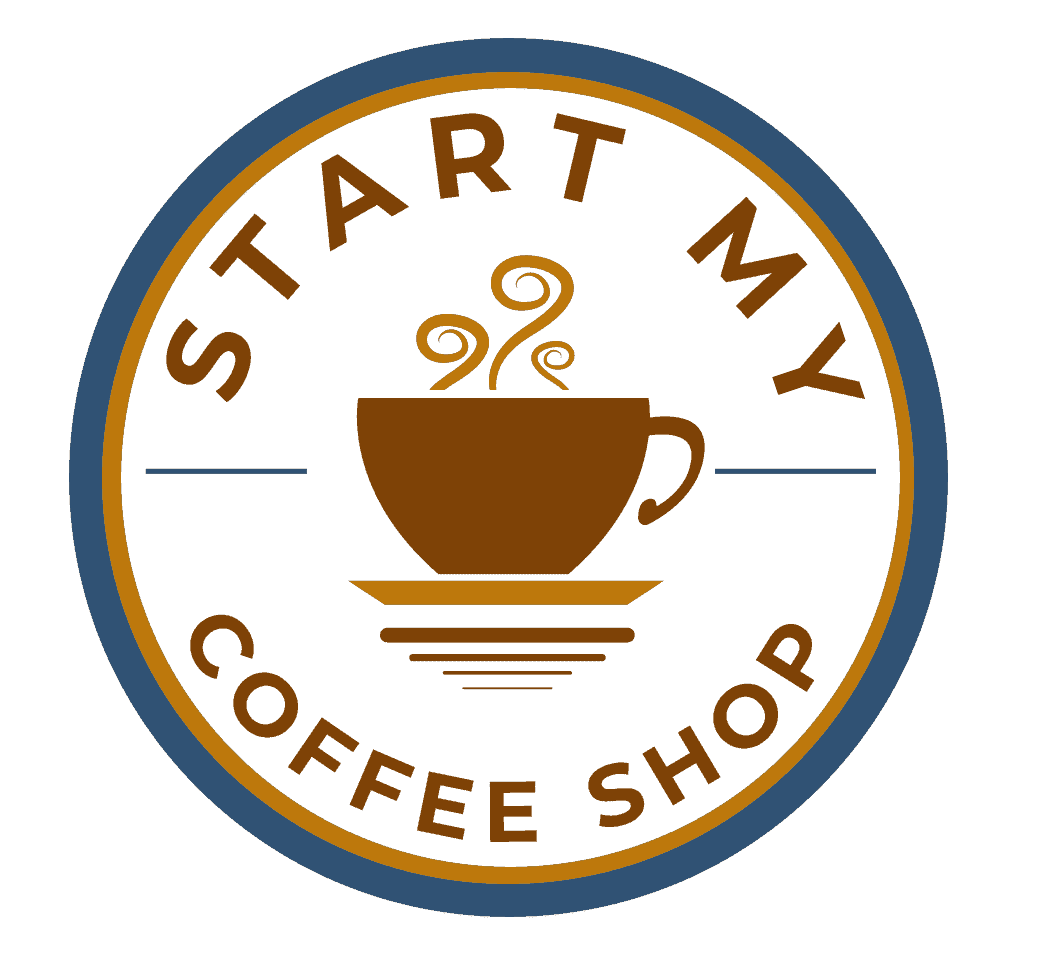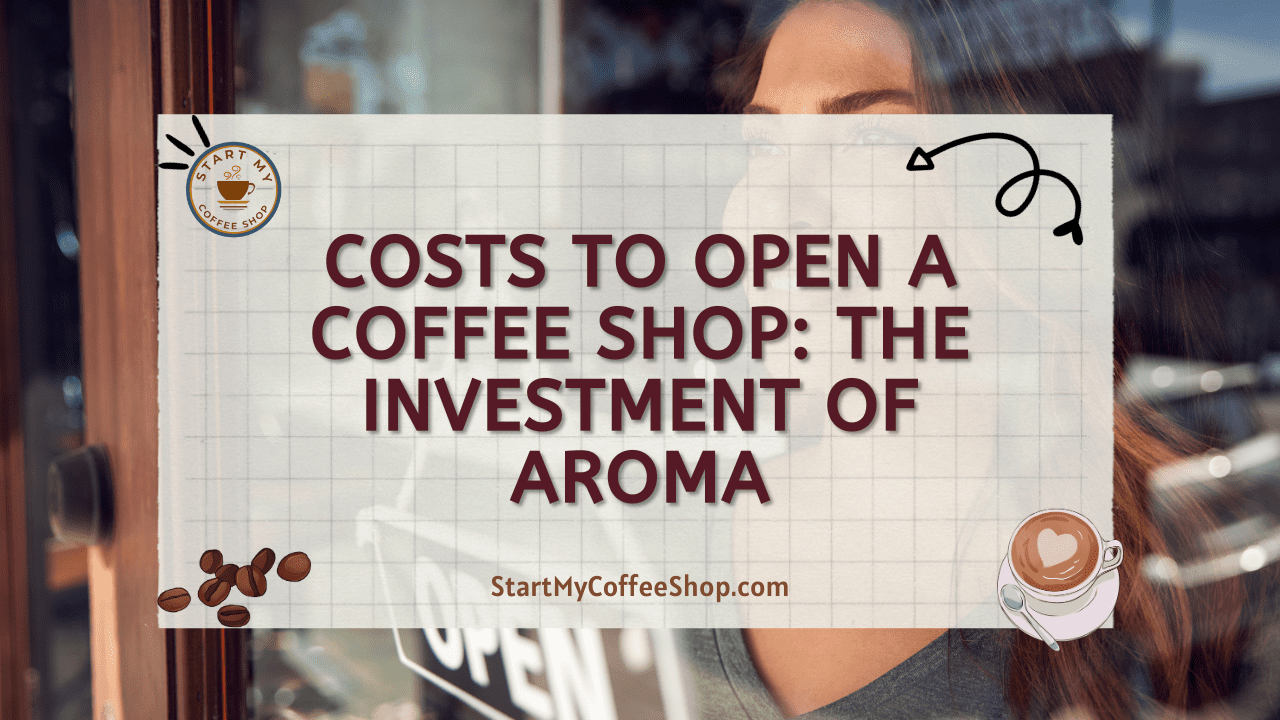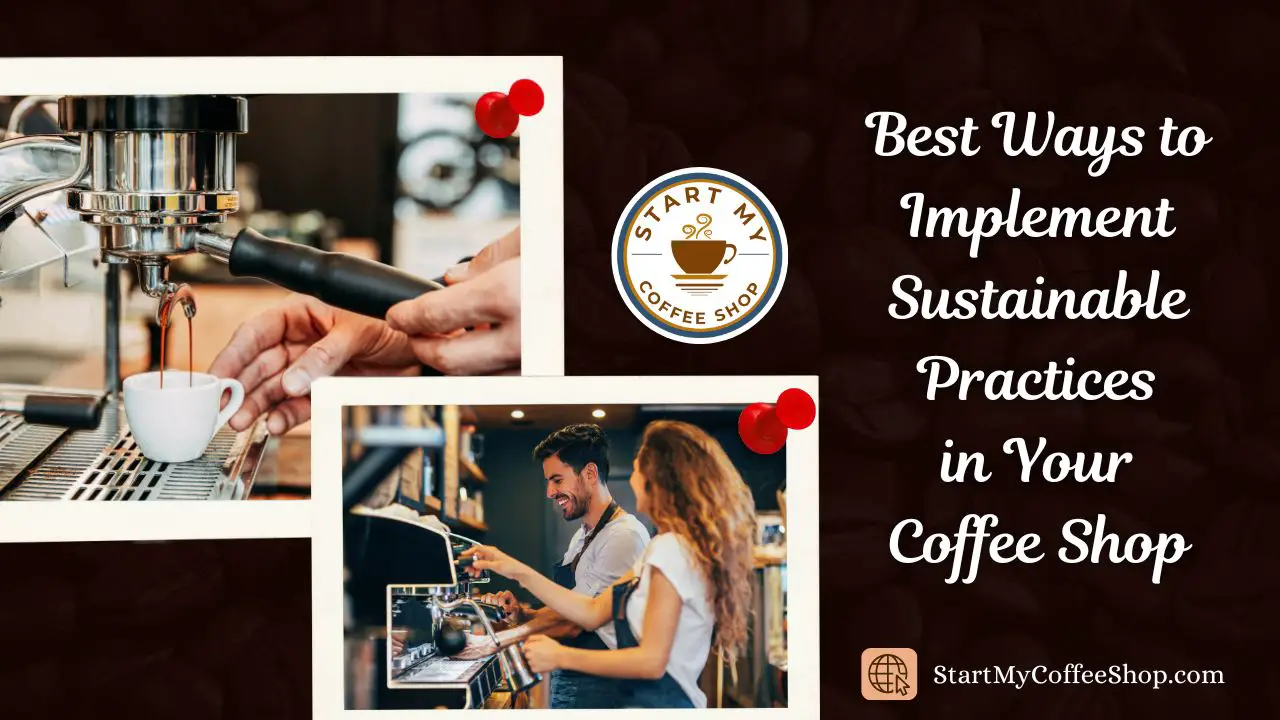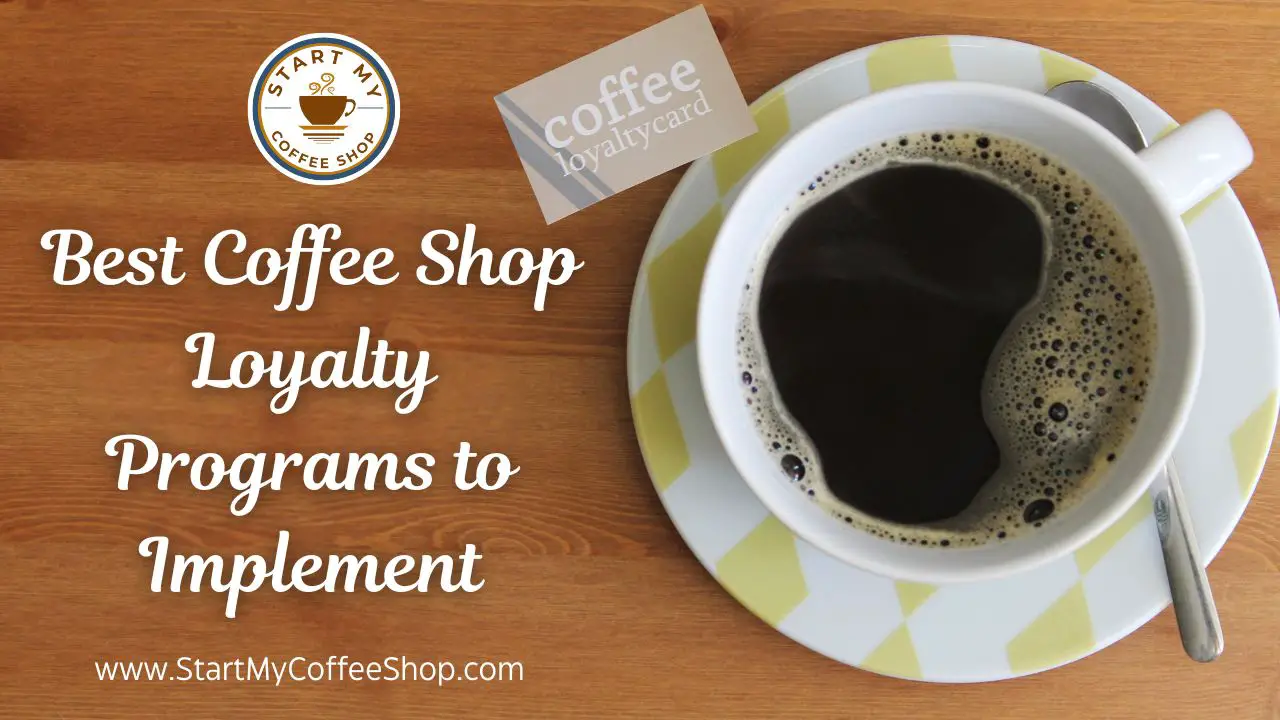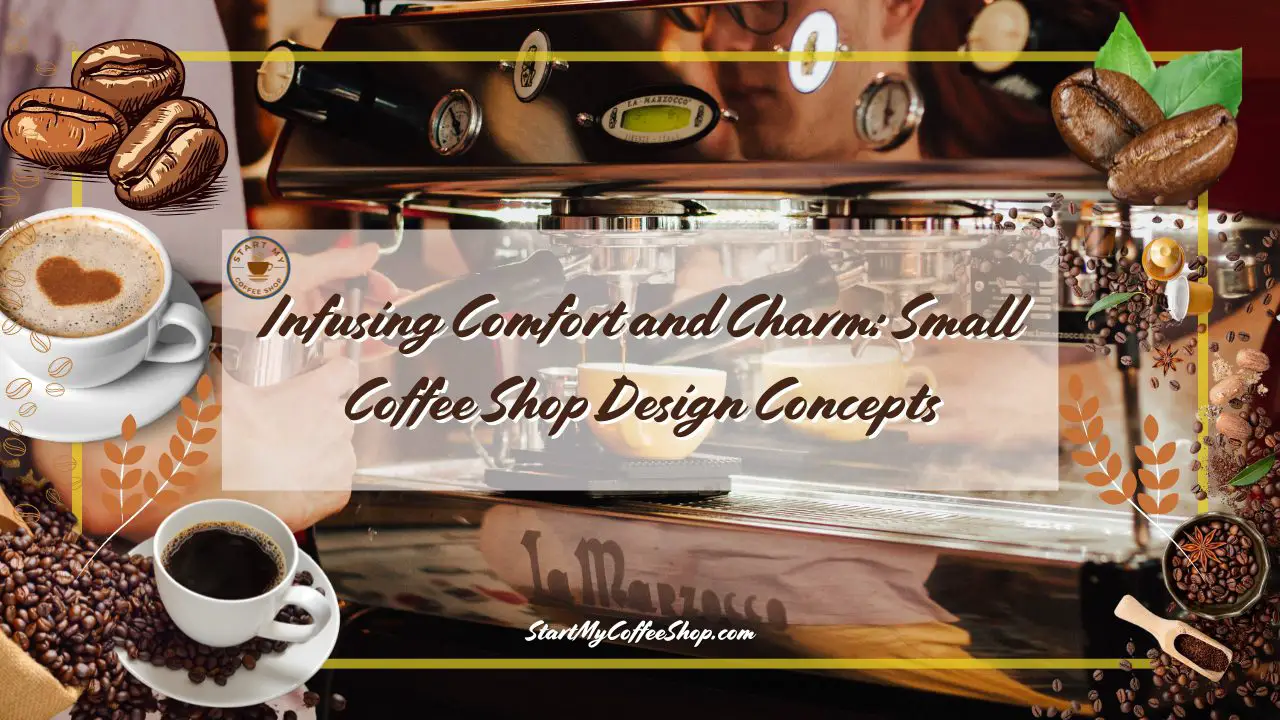Opening a coffee shop can be an exciting and enjoyable venture. However, it’s crucial to have a thorough understanding of the costs involved to ensure a fantastic and sustainable business.
The cost of opening a coffee shop can vary widely depending on factors such as location, size, equipment, permits, and staffing. On average, you can expect to invest anywhere from $80,000 to $300,000 or more.
In this article, I will delve into the various expenses you can expect when starting your coffee shop.
1. Location and Rent:
 In bustling commercial areas with high foot traffic and visibility, rental rates tend to be higher. These prime locations offer the advantage of attracting more potential customers and increasing your chances of growth. However, the increased rental costs can put a strain on your budget, especially during the initial stages of your coffee shop’s operation.
In bustling commercial areas with high foot traffic and visibility, rental rates tend to be higher. These prime locations offer the advantage of attracting more potential customers and increasing your chances of growth. However, the increased rental costs can put a strain on your budget, especially during the initial stages of your coffee shop’s operation.
On the other hand, smaller towns or less prominent neighborhoods often provide more affordable rental options. While these locations may have lower visibility and foot traffic, they can still be feasible if you have a well-defined target market and a strong marketing strategy. Lower rental costs can free up your budget for other essential aspects of your coffee shop, such as equipment, marketing, and staff.
Striking a balance between visibility and cost-effectiveness is crucial. Consider your target customers, their preferences, and their commuting patterns. Are they more likely to visit a coffee shop in a busy downtown area or a cozy neighborhood spot? Analyze the local competition and determine if the market can sustain another coffee shop in that particular area.
Additionally, assess the accessibility and parking options of potential locations. Easy access and convenient parking can significantly impact customer convenience and satisfaction. Look for areas with a good mix of residential, commercial, and office spaces, as they can attract a diverse customer base throughout the day.
It’s also worth considering the potential for growth and development in the chosen location. Are there any upcoming developments or changes in the area that could positively impact your business? Keeping an eye on the prospects of the neighborhood can help you make a more informed decision.
Ultimately, the ideal location for your coffee shop will depend on a combination of factors specific to your business goals and target audience. Conduct thorough market research, evaluate your financial resources, and consult with industry experts if needed. By carefully considering the rental costs, visibility, and other factors, you can select a location that sets the stage for the progress of your coffee shop venture.
Read more about: Average Costs for Coffee Startup: Bean Counting 101
2. Equipment and Furnishings:
The cost of acquiring these items can vary significantly based on factors such as their quality, brand, and functionality. It is crucial to strike a balance between your budget and the need for reliable, durable equipment that will support smooth operations in the long run.
When it comes to an espresso machine, it is advisable to invest in a reputable brand known for its reliability and consistency. A quality espresso machine can range in price from a few thousand dollars to tens of thousands of dollars, depending on its features and capabilities. Opting for a machine that offers consistency in extraction and allows for adjustments to meet customer preferences will contribute to the quality of your coffee offerings.
Coffee grinders are another essential investment for any coffee shop. Grind consistency plays a vital role in the taste and aroma of the coffee. High-quality grinders with precise grind settings can enhance the overall coffee experience. Prices for coffee grinders can vary widely depending on the type (burr or blade), size, and brand. It is recommended to choose grinders that offer durability and flexibility for different brewing methods.
Blenders and refrigerators are necessary for shops that offer specialty coffee beverages and refreshments. Quality blenders with sufficient power and durability can handle consistent usage and ensure smooth and creamy textures for blended drinks. Additionally, investing in reliable refrigerators will help maintain the freshness and quality of perishable ingredients and dairy products.
Tables and chairs should not be overlooked when considering the furnishings of your coffee shop. These elements contribute to the ambiance and comfort of your space. Depending on your aesthetic preferences and target market, you can choose from a variety of styles, materials, and price ranges.
While the upfront cost of high-quality equipment and furnishings may be higher, it is an investment that pays off in the long run. Reliable and durable equipment will minimize downtime, repair costs, and the need for frequent replacements. Additionally, customers will appreciate the attention to detail and the consistent quality of your offerings, leading to increased customer satisfaction and loyalty.
3. Licensing and Permits:
 Operating a coffee shop involves obtaining the appropriate licenses and permits, a crucial step in ensuring compliance with local regulations. The specific licenses required may vary depending on your location, and it is essential to understand the specific requirements for your area.
Operating a coffee shop involves obtaining the appropriate licenses and permits, a crucial step in ensuring compliance with local regulations. The specific licenses required may vary depending on your location, and it is essential to understand the specific requirements for your area.
One common permit necessary for running a coffee shop is a health department permit. This permit ensures that your establishment meets the health and safety standards set by the local health department. The requirements may include regular inspections, proper food handling procedures, and maintaining a clean and hygienic environment.
In addition to the health department permit, you may need a food handling license. This license confirms that your staff has received proper training in food safety practices. It may involve attending food safety courses, obtaining certifications, and implementing proper handling, storage, and preparation procedures for food and beverages served in your coffee shop.
If you plan to serve alcoholic beverages in your coffee shop, you will likely need a liquor license. The process for obtaining a liquor license can be more complex and involve additional fees and regulations. It is essential to research the specific requirements and restrictions for serving alcohol in your area and comply with the legal obligations associated with it.
The costs associated with licensing and permits can vary widely depending on several factors, including the type of permit, your location, and the size of your coffee shop. Some permits may have annual renewal fees, while others may require an initial application fee. It is crucial to allocate a portion of your budget for these costs and factor them into your financial planning.
To ensure that you have all the necessary licenses and permits, start by contacting your local city or county government offices. They can provide specific requirements and guide you through the application process. Consider consulting with professionals or legal advisors who specialize in licensing and permits to ensure that you meet all the necessary regulations.
4. Interior Design and Branding:
Designing an inviting and visually appealing atmosphere is a vital aspect of attracting customers to your coffee shop. The cost of interior design and branding can vary depending on your vision, the size of the space, and the complexity of the project. It encompasses various elements, including furniture, decor, signage, menu boards, and branding materials.
One of the key considerations in creating an inviting atmosphere is choosing the right furniture. Comfortable and stylish seating options such as chairs, sofas, and booths are essential for providing a pleasant experience to your customers. The cost of furniture can vary depending on the materials, design, and quality. It’s important to strike a balance between aesthetics, functionality, and durability when selecting furniture for your coffee shop.
Decor plays a significant role in setting the ambiance of your coffee shop. Wall art, lighting fixtures, plants, and other decorative elements contribute to the overall atmosphere and theme. The cost of decor can vary depending on your style preferences and whether you choose ready-made or custom-designed pieces. Incorporating unique and eye-catching decor can help create a memorable and Instagram-worthy space that attracts customers.
Signage and menu boards are important elements that communicate your brand and menu offerings to customers. Professionally designed and well-placed signage can enhance visibility and draw attention to your coffee shop. The cost of signage can vary depending on the materials used, size, complexity, and any additional lighting or digital features.
Branding materials, including logos, menus, packaging, and promotional materials, are essential for establishing your coffee shop’s identity and creating a cohesive brand image. Investing in professional graphic design services and high-quality printing can elevate the perception of your brand. The cost of branding materials will depend on the complexity of your design, the quantity needed, and the printing techniques and materials used.
Read more about: Average Cost to Start Up a Coffee Shop: Unveiling the Monetary Commitment
5. Inventory and Supplies:
One of the essential expenses for any coffee shop is building an inventory of coffee beans, syrups, milk, pastries, and other necessary supplies. The cost of these items can vary depending on factors such as the size of your menu and the projected volume of customers your coffee shop expects to serve.
To ensure a smooth and efficient operation, it’s crucial to establish strong relationships with reliable suppliers who can provide consistent quality and competitive pricing.
Coffee beans are the foundation of your coffee shop’s offerings. The cost of coffee beans will depend on various factors, including the origin, quality, and roasting process. Specialty and single-origin beans often come at a higher price point due to their unique characteristics and flavors.
It’s important to strike a balance between quality and cost-effectiveness when selecting the beans that will represent your coffee shop’s brand. Developing relationships with reputable coffee roasters or exploring direct sourcing from coffee farms can help ensure the freshness and distinctiveness of your coffee beans.
Syrups and flavorings play a crucial role in creating a diverse and appealing menu. The cost of syrups will depend on factors such as the brand, variety of flavors, and the quantity purchased.
Offering a wide range of syrups allows you to cater to different customer preferences and create signature drinks. Building a partnership with suppliers who offer competitive pricing and a diverse selection of syrups will help you maintain a well-stocked inventory.
Milk is another essential ingredient in the majority of coffee beverages. The cost of milk will depend on the type and quality you choose to serve. Options such as whole milk, skim milk, soy milk, almond milk, and oat milk should be considered based on customer demand and dietary preferences. Researching local dairy suppliers and alternative milk distributors will help you find reliable sources that provide high-quality milk at reasonable prices.
Pastries and baked goods are often popular additions to a coffee shop’s menu. The cost of pastries will depend on factors such as the variety, quality, and whether you choose to make them in-house or source them from local bakeries.
Offering a selection of pastries that cater to different tastes and dietary requirements can attract a wider customer base. Building relationships with trusted suppliers or collaborating with local bakers ensures a consistent supply of fresh and delicious pastries.
6. Staffing and Training:
Finding the right employees who possess the necessary skills and a positive attitude is essential. Look for individuals who have a passion for coffee, good communication skills, and the ability to provide exceptional customer service. Conduct thorough interviews, check references, and consider practical assessments to gauge their suitability for the role.
The number of employees you hire will depend on the size and layout of your coffee shop, as well as the projected number of customers you expect to serve. Determine the optimal staff-to-customer ratio to ensure efficient service without compromising on quality. Overstaffing can lead to unnecessary costs, while understaffing can result in long wait times and poor customer experiences.
In addition to wages, consider offering benefits to attract and retain quality employees. Benefits such as health insurance paid time off, and employee discounts can enhance job satisfaction and loyalty. Offering competitive wages and providing opportunities for advancement within your coffee shop can also help attract and retain talented individuals.
Training plays a crucial role in ensuring that your staff can meet the expectations of your customers. Develop a comprehensive training program that covers various aspects, including coffee brewing techniques, customer service skills, and knowledge of your menu offerings.
Ongoing training and development opportunities should be provided to enhance employee skills and keep them engaged. This can include workshops, online courses, or even sending employees to industry conferences and events.
Investing in the training and development of your staff not only enhances their skills but also contributes to their job satisfaction and overall performance. A well-trained team can handle customer inquiries, provide recommendations, and deliver a personalized experience that keeps customers coming back.
Regularly evaluate the performance of your staff and provide constructive feedback to help them improve. Recognize and reward exceptional performance to boost morale and motivate your team. Creating a positive work environment that fosters teamwork and open communication is essential for employee satisfaction and retention.
7. Marketing and Advertising:
One of the primary marketing expenses is designing and maintaining a professional website. Your website serves as a digital storefront and provides essential information about your coffee shop, including location, menu, hours of operation, and contact details.
Hiring a web designer or utilizing website-building platforms can help create an engaging online presence that reflects your brand and entices potential customers.
Managing social media platforms is another important aspect of coffee shop marketing. Social media allows you to interact with your audience, showcase your products, and promote special offers or events.
Costs associated with social media management may include content creation, scheduling tools, and advertising budgets. Engaging with customers through social media platforms can help build a loyal following and create a sense of community around your coffee shop.
Print materials, such as flyers, posters, and business cards, are traditional yet effective marketing tools. Designing eye-catching and informative print materials can help attract local customers and raise awareness within the community.
Distributing these materials strategically, such as placing them in local businesses or community boards, can increase visibility and generate interest in your coffee shop.
Online advertising is another avenue to consider when budgeting for marketing expenses. Platforms like Google Ads and social media advertising offers targeted advertising options that can reach potential customers based on their demographics, interests, and location.
Setting a budget for online advertising allows you to create targeted campaigns that maximize your reach and generate traffic to your coffee shop’s website or physical location.
Promotions and special events are also important for driving customer engagement and foot traffic. Consider allocating a portion of your marketing budget to promotional activities such as discounts, loyalty programs, or hosting events like coffee tastings or live music performances.
These initiatives not only attract new customers but also encourage repeat visits and foster a sense of loyalty among your existing clientele.
Read more about: Average Cost to Start a Small Coffee Shop: Brewing and Budgeting
8. Utilities and Operational Expenses:
When planning the budget for your coffee shop, it’s important to factor in ongoing operational expenses. These expenses are necessary for the day-to-day functioning of your business and should not be overlooked. Some of the key operational expenses to consider include utilities, insurance, accounting services, Point of Sale (POS) systems, and maintenance and repairs.
Utilities such as electricity, water, heating, and cooling are essential for creating a comfortable environment for your customers and staff. These costs can fluctuate based on factors such as the size of your coffee shop, equipment usage, and local utility rates. Including these expenses in your budget ensures that you can cover these essential services without any disruption.
Insurance is another crucial expense that provides protection and peace of mind for your coffee shop. Consider obtaining general liability insurance, property insurance, and workers’ compensation insurance to safeguard your business from unforeseen events, accidents, or lawsuits. The cost of insurance will vary based on factors such as the size of your shop, location, and coverage limits.
Accounting services are vital for managing your finances effectively. Hiring a professional accountant or utilizing accounting software can help you keep track of income, expenses, and taxes. This expense ensures accurate financial records and enables you to make informed business decisions based on reliable financial data.
Investing in a reliable Point of Sale (POS) system is essential for smooth transactions and efficient order management. The cost of a POS system will depend on its features, capabilities, and any associated monthly fees. A POS system can help streamline your operations, track sales, manage inventory, and generate reports for analysis.
Maintenance and repairs are inevitable expenses for any business. Regular maintenance helps keep your coffee shop running smoothly and minimizes the risk of unexpected breakdowns. Allocate funds for routine maintenance tasks, equipment repairs, and any necessary renovations or upgrades to maintain the quality and functionality of your space.
It’s also wise to have a contingency fund in your budget to account for unexpected expenses or emergencies. This fund serves as a safety net and provides financial flexibility in case of unforeseen circumstances, such as equipment failures or sudden repairs.
Frequently Asked Questions
Do I need any specific permits or licenses to open a coffee shop?
Yes. The specific requirements vary depending on your location, so it’s important to research and comply with local regulations.
How much should I budget for equipment and furnishings?
A ballpark estimate for essential equipment like an espresso machine, grinders, and refrigeration could range from $10,000 to $40,000. Furnishings, including tables, chairs, and decor, can add a cost of several thousand dollars.
What are the ongoing operational expenses I should consider?
This includes utilities such as electricity and water, insurance, payroll and employee benefits, marketing and advertising, maintenance and repairs, and restocking inventory.
To learn more on how to start your own coffee shop, check out my startup documents here.
Disclaimer: The information provided by StartMyCoffeeShop.com (“The Site”) is for general informational purposes only. All information on the Site is provided in good faith. However, we make no representation or warranty of any kind, express or implied, regarding the accuracy, adequacy, validity, reliability, availability, or completeness of any information on the Site. Under no circumstance shall we have any liability to you for any loss or damage of any kind incurred as a result of the use of the Site or Reliance on any information provided on the Site. Your use of the Site and reliance on any information on the Site is solely at your own risk. This blog post is for educational purposes only and does not constitute legal advice. Please consult a legal expert to address your specific needs. Terms and Conditions. (https://startmycoffeeshop.com/terms-and-conditions/)

Hi! I’m Shawn Chun
My adventure in coffee began when I first launched my first coffee shop back in the early 2000s. I had to figure out so many things on my own and to make it worse within 2 years of opening two large corporate coffee chains moved in just blocks away from me!
As I saw smaller and even some larger coffee shops in the neighborhood slowly lose customers to these giant coffee chains and slowly close up shop, I knew that I had to start getting creative…or go out of business.
I (like you may be) knew the coffee industry well. I could make the best latte art around and the foam on my caps was the fluffiest you have ever seen. I even had the best state-of-the-art 2 group digital Nuova Simonelli machine money could buy. But I knew that these things alone would not be enough to lure customers away from the name brand established coffee shops.
Eventually, through lots of trial and error as well as perseverance and creativity I did find a way to not only survive but also thrive in the coffee/espresso industry even while those corporate coffee chains stayed put. During those years I learned to adapt and always faced new challenges. It was not always easy, however, in the end, I was the sole survivor independent coffee shop within a 10-mile radius of my location. Just two corporate coffee chains and I were left after that year. All told the corporate coffee chains took down over 15 small independent coffee shops and kiosks and I was the last one standing and thriving.
Along the years I meet others with the same passion for coffee and I quickly learned that it is not only “how good a barista is” that makes a coffee shop successful, but the business side of coffee as well.
Hence why I started this website you are on now. To provide the tools and resources for up and coming coffee shop owners to gain that vital insight and knowledge on how to start a coffee shop successfully.
Stick around, browse through my helpful blog and resources and enjoy your stay! With lots of LATTE LOVE!
Shawn
